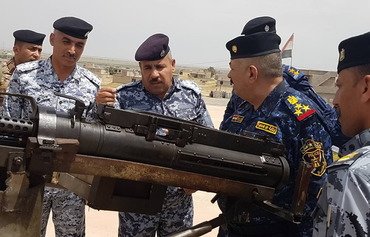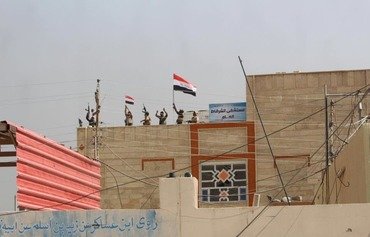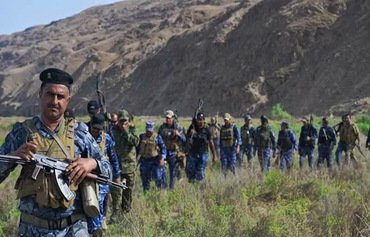From advanced defensive positions in western al-Sharqat, Iraqi forces backed by local tribesmen are stepping up their preparations to respond to any possible attacks by the "Islamic State of Iraq and the Levant" (ISIL).
Although Iraqi forces were able to regain control of the western part of the city on September 22, 2016, its eastern side remains under ISIL control.
The danger posed by eastern al-Sharqat, which is ISIL's last stronghold in Salaheddine province, is that it provides a geographical connection to areas where ISIL fighters still have a heavy presence, notably al-Hawija in Kirkuk province, officials said.
On April 4th, the group launched an attack from those areas on the city of Tikrit in Salaheddine, using suicide bombers wearing explosive belts.
The attack, described as "the most violent" on Tikrit since its liberation two years ago, highlighted the security threats coming from the eastern banks of the Tigris River.
"It is impossible for ISIL militants to cross the river and establish a foothold for themselves in the liberated towns and villages," said Salaheddine provincial council security committee member Abed Sultan Issa.
"The recent attack on Tikrit was a security breach, and it happens everywhere," he told Diyaruna. "But the group will not be able to occupy any inch or threaten our cities very much."
Sporadic attacks take place from eastern al-Sharqat, he said, "and are being confronted by the police, the army and the tribes".
Strong security co-ordination
There has been a high level of security co-ordination, Issa said, "and there is good intelligence work to monitor the movements of militants and thwart infiltration".
"We have not as of now found any signs that there are terrorists' cells," he said.
Residents of western al-Sharqat have been co-operating with Iraqi forces, and "all of them reject the return of the group", Issa said.
The need for a large-scale military operation remains, however, to "liberate the occupied part of al-Sharqat and cut off the enemy's connection routes with its headquarters in al-Hawija and the surrounding areas", he added.
Security forces are on alert and ready to respond to ISIL's attacks, al-Sharqat mayor Ali Dawdah told Diyaruna.
"The forces of the Salaheddine Operations Command, the provincial police and the 51st tribal brigade of al-Sharqat constitute a defensive line," he said.
There is ongoing military activity to bridge gaps exploited by terrorists and to prevent potential threats, he said.
ISIL fighters fire off indiscriminate mortar attacks that strike civilian houses, he said, "but the security forces quickly respond and silence the sources of fire".
ISIL prepares to face defeat
Al-Sharqat may be an important target for ISIL due to the group's anticipation of defeat, Dawdah said.
"[ISIL] lives under the impact of successive defeats, and it is likely trying to open a safe passage through Mount Zawyia and al-Sharqat for the escape of its elements from al-Hawija towards Hatra and Tal Abtah," he said.
From there they would probably attempt to infiltrate into Syria, he added.
"This is not possible because of the heavy deployment of military units along the defensive line parallel to the areas west of Kirkuk," he said.
Lt. Col. Saleh Hassan Zleit, deputy commander of al-Sharqat's 51st tribal brigade, told Diyaruna he continues to inspect the deployment points of his forces in the field, noting that "hardly a day passes without carrying out a combat mission".
"When we have information about the presence of ISIL gatherings or movements, we start pounding them with artillery immediately," he said. "If the gatherings are far from the contact areas, they are attacked by the army's air force."
On April 1st, Iraqi warplanes struck an ISIL hideout in the village of al-Safina, east of al-Sharqat, killing 15 of the group's fighters.
The last time ISIL was able to launch a big attack on western al-Sharqat was on November 4th, 2016, Zleit said.
"Since then, it has not been able to carry out such attacks as a result of our early targeting of its gathering centres with quality operations," he said.
ISIL has a heavy military presence in al-Hawija and the areas of al-Fatha and Allas, he said, but its influence in the eastern side of al-Sharqat is "very weak due to ongoing military activities in that axis".

![Al-Sharqat police officers verify a resident's information. The 'Islamic State of Iraq and the Levant' has staged attacks against western al-Sharqat, which was liberated in 2016. [Photo courtesy of al-Sharqat police]](/cnmi_di/images/2017/05/01/7747-Iraq-Sharqat-police-600_384.jpg)






